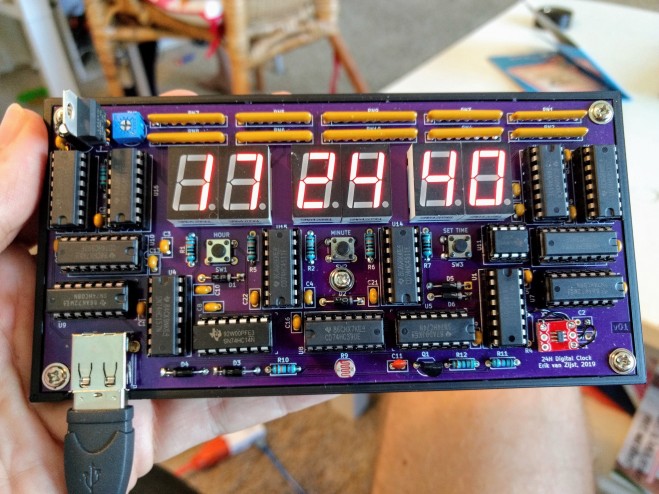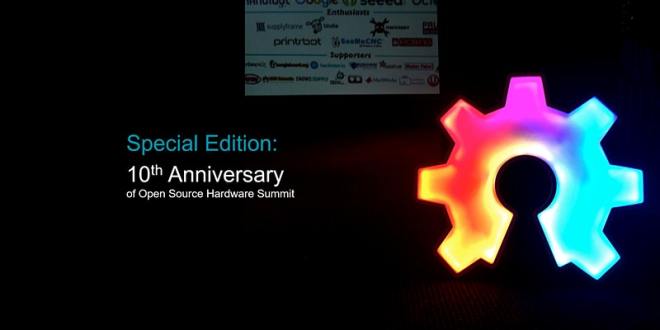This excellent Hackaday Supercon keynote by Megan Wachs of SiFive gives a great introduction to two exciting topics:
“RISC-V and FPGAs: Open Source Hardware Hacking”
This excellent Hackaday Supercon keynote by Megan Wachs of SiFive gives a great introduction to two exciting topics:
“RISC-V and FPGAs: Open Source Hardware Hacking”
Joey Castillo is an open-hardware device for reading books in all the languages of the world:
It includes a large screen and buttons for navigation, as well as audio options for accessibility and ports to extend its functionality. Its detailed silkscreen, with the all the manic energy and quixotic ambition of a Dr. Bronner’s bottle, aims to demystify the Open Book’s own design, breaking down for the curious reader both how the book works, and how they can build one for themselves.
For more detailed technical specifications, check out the Hackaday.io project page.
Purchase
The Open Book is not yet available for purchase, but you can order the board from OSH Park, and the BOM is available at the project’s GitHub page. Instructions for assembly are printed on the front of the PCB.
Contribute
Have some info to add for this board? Edit the source for this page here.
One of the first things you learn in electronics is how to identify a resistor’s value. Through-hole resistors have color codes, and that’s generally where beginners begin. But why are they marked like this? Like red stop signs and yellow lines down the middle of the road, it just seems like it has always been that way when, in fact, it hasn’t.
Before the 1920s, components were marked any old way the manufacturer felt like marking them. Then in 1924, 50 radio manufacturers in Chicago formed a trade group. The idea was to share patents among the members. Almost immediately the name changed from “Associated Radio Manufacturers” to the “Radio Manufacturer’s Association” or RMA. There would be several more name changes over the years until finally, it became the EIA or the Electronic Industries Alliance. The EIA doesn’t actually exist anymore. It exploded into several specific divisions, but that’s another story.
This is the tale of how color bands made their way onto every through-hole resistor from every manufacturer in the world.


We would like to let our customers know that all OSH Park boards are manufactured in the United States, and we
Crazy Circuits is a project to create Lego-compatible circuit kits and modules by Brown Dog Gadgets, now with breakout boards for Particle Photon and NodeMCU:
Check out the designs on GitHub:
Back in December, I visited Nicolas Collins at the School of the Art Institute in Chicago and got to see one of the latest creations that he is using in class. The beautiful traces wind their way into the classic LM386 audio amp for an expressive overdriven effect:
https://twitter.com/oshpark/status/1206711384223997958
Nicolas Collins is well known for having written Handmade Electronic Music: The Art of Hardware Hacking:
… provides a long-needed, practical, and engaging introduction to the craft of making – as well as creatively cannibalizing – electronic circuits for artistic purposes. With a sense of adventure and no prior knowledge, the reader can subvert the intentions designed into devices such as radios and toys to discover a new sonic world. At a time when computers dominate music production, this book offers a rare glimpse into the core technology of early live electronic music, as well as more recent developments at the hands of emerging artists. In addition to advice on hacking found electronics, the reader learns how to make contact microphones, pickups for electromagnetic fields, oscillators, distortion boxes, and unusual signal processors cheaply and quickly.
e wish that all the beautiful animations that are available today to understand math and electronics had been around when we were in school. Nonetheless, they are there for today’s students and [Learn Engineering] has another gorgeous one covering LC oscillation. Check it out, below.
If you are thoroughly grounded — no pun intended — in LC circuits, you probably won’t learn anything new. However, the animations are worth watching, just to admire them, if nothing else.
We were amused by his statement: “… looks as if the capacitor is saying: ‘you take the energy’ and the inductor then says, ‘no, you take my energy.’” Then we were further amused by [Seraph’s] comment which added, “Resistance in the circuit: ‘Alright, I’ll take the energy, then.’”
Of course, there are other ways to think of an LC circuit. The math isn’t that hard. Most of us learned that the circuit’s mechanical analog is a mass on a spring or a pendulum. The mass’s potential energy stretches out the spring until the spring then pulls it back until the potential energy of the mass pulls it back down.
If you want to experiment virtually, try the Falstad simulator. Just remember that if you think the sine wave isn’t dampening to look at the scale. As the sine wave dampens, the simulator will adjust the scale so you keep seeing approximately the same size sine wave.
We never get tired of watching the Fourier series explained graphically. Or anything from [3Blue1Brown].
Erik van Zijst writes about the design of a 24-hour digital quartz clock with self-dimming LED display:

After 20+ years of programming, I wanted to get some understanding of the electronics that make my career possible.
I had built the basic individual logic gates with transistors on a breadboard, but to build anything meaningful I needed loads of them and so I bought a somewhat random collection of logic chips on Amazon which introduced me to the 7400-series and the concept of datasheets.
After a few simple projects I wanted to build something more useful: a quartz clock with LED display.
Here is a video of the clock:
The board is shared on OSH Park.
I attended the 36th Chaos Communication Congress (36c3) during the last
week of 2019 in Leipzig, Germany. It was an amazing event and Hackaday has good coverage. All the talks are available online including my talk:
Linux on Open Source Hardware with Open Source chip design
Want to run Linux on open hardware? This talk will explore Open Source Hardware projects capable of that task, and explore how RISC-V and free software FPGA projects can be leveraged to create libre systems.
The video is also available on YouTube:
My slides are on SlideShare:
The slides are also available as a PDF on GitHub.

Join us for the Open Hardware Summit on March 13th in New York City! It will be the 10th anniversary and Sophi Kravitz will be giving a keynote. More speakers will be announced soon!
The 2020 Open Hardware Summit will be held Friday, March 13th 2020 at Tishman Auditorium at NYU School of Law, New York located at 63 5th Ave, New York, NY 10003.
The Open Hardware Summit is the annual conference of the 501c3 Open Source Hardware Association (OSHWA). We aim to foster technological knowledge and encourage research that is accessible, collaborative and respects user freedom. OSHWA is recognized by the IRS as a 501(c)(3) tax-exempt public charity and donations and sponsorships to OSHWA and the Summit are tax deductible to the extent permitted by law.
Types of ticket:
Follow updates about the Open Hardware Summit on Twitter: